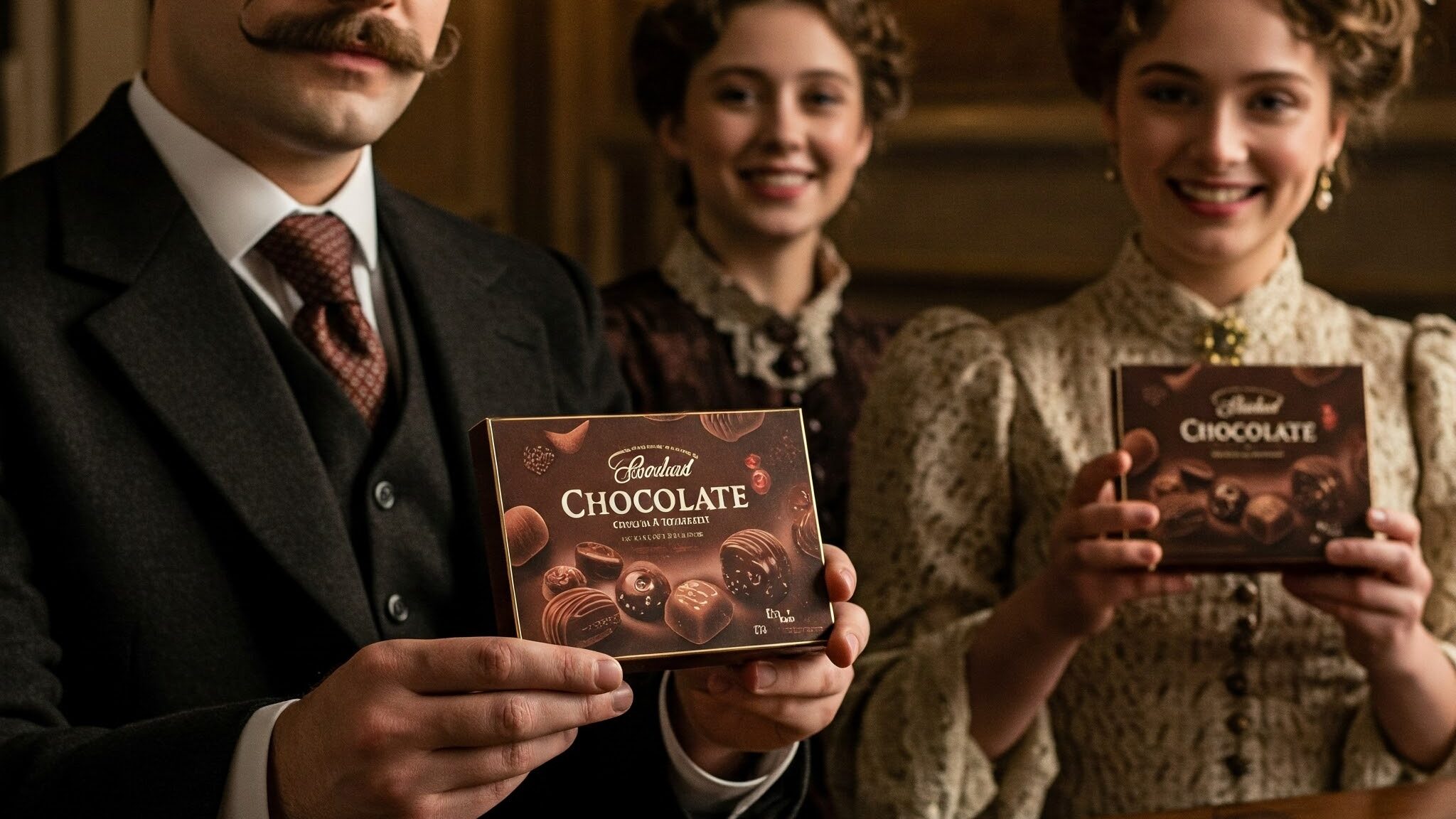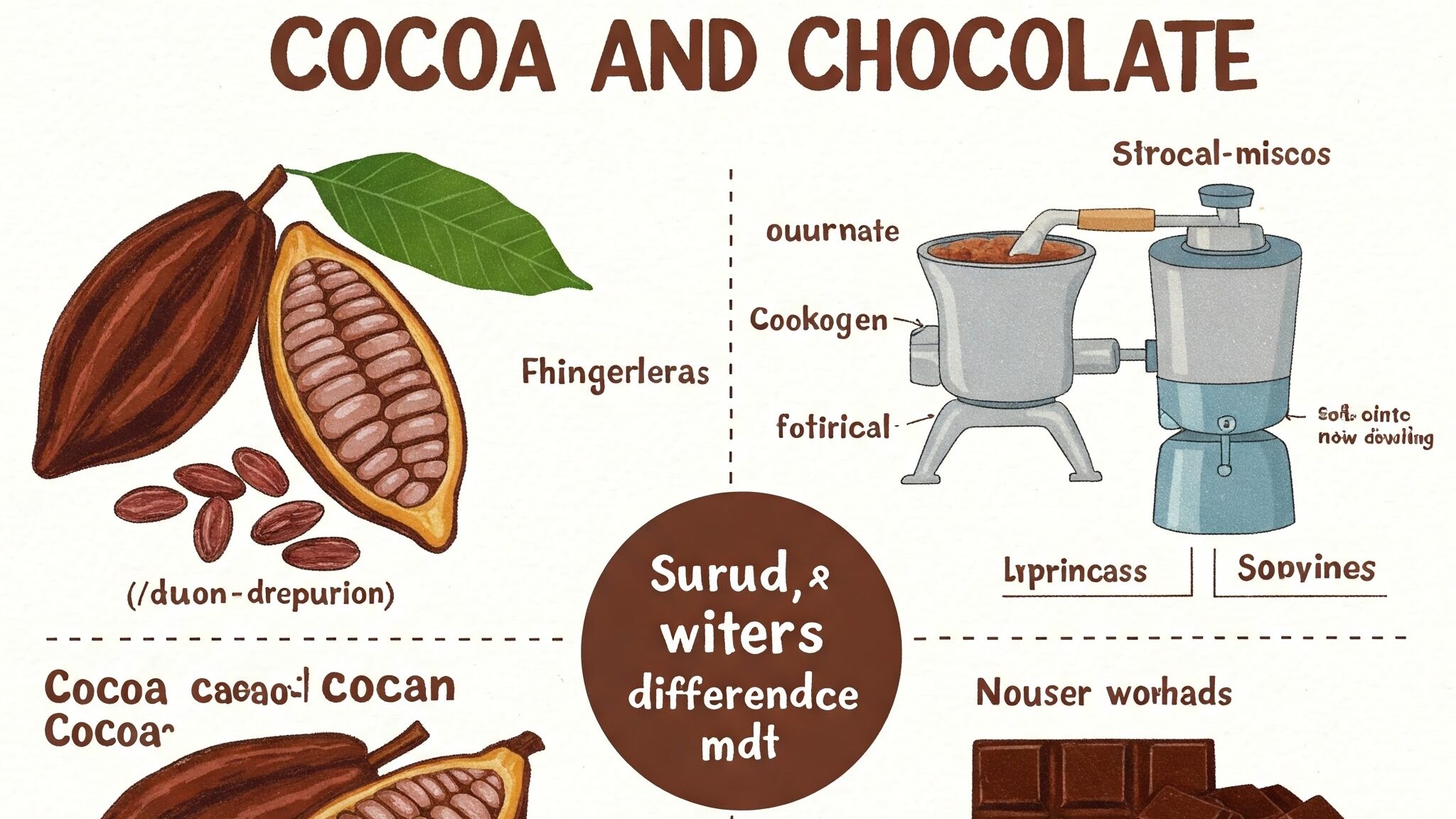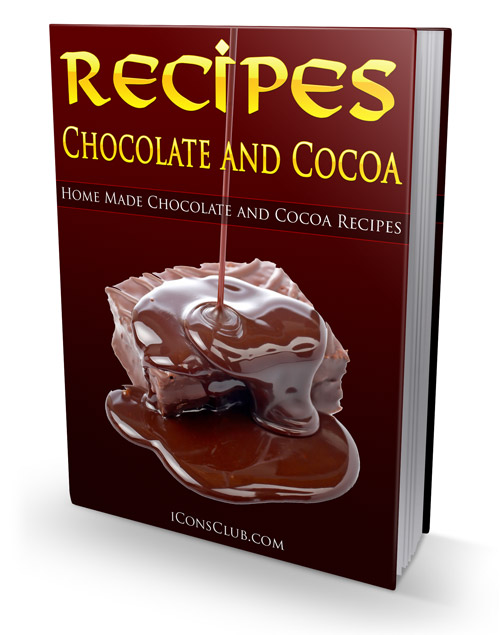Chocolate and Cocoa: E-Book summary and Free Download
This briefing document provides a detailed review of the main themes, important ideas, and notable facts presented in the source document, “Chocolate and Cocoa Recipes.pdf”. The document appears to be a collection of recipes and anecdotal information pertaining to the use of cocoa and chocolate, with a strong emphasis on the products of Walter Baker & Co., Ltd.
Main Themes:
1.The Versatility of Cocoa and Chocolate in Culinary Applications:

The most striking theme is the sheer range of uses for cocoa and chocolate. The document features recipes spanning beverages (hot chocolate, breakfast cocoa), desserts (cakes, pies, puddings, ice cream, mousses, Bavarian creams, jellies), candies and confections (fudges, caramels, creams, brittles, nougatines, dipped fruits and nuts), frostings and sauces, and even baked goods like biscuits, cookies, doughnuts, and gingerbread. This highlights the pervasive integration of chocolate into various aspects of food preparation.
2.Emphasis on Quality and Purity, Particularly Baker’s Products:

Throughout the recipe sections and in dedicated informational text, there is a strong and consistent promotion of Walter Baker & Co.’s cocoa and chocolate products. The document stresses the “absolutely pure” nature of Baker’s Breakfast Cocoa, noting that “[n]o alkalies or other chemicals or dyes are used in its preparation.” The importance of using “a pure cocoa of undoubted quality and excellence of manufacture, and which bears the name of a respectable firm” is explicitly stated by a “distinguished London Physician.” This underscores the value placed on unadulterated cocoa and positions Baker’s as the standard for quality.
3.Historical Context and Endorsement of Chocolate:

The inclusion of excerpts from M. Brillat-Savarin’s Physiologie du Goût provides a historical perspective on the introduction and early appreciation of chocolate in Europe. Savarin recounts its arrival in France with Anne of Austria and notes Linnæus’s designation of the cocoa tree as Theobroma, “food for the gods.” Furthermore, the document highlights historical beliefs in the medicinal virtues of chocolate, mentioning Christoph Ludwig Hoffman’s treatise recommending it for various diseases, including the case of Cardinal Richelieu’s recovery from “general atrophy.” The anecdote about Spanish ladies taking chocolate to church, and Father Escobar’s accommodating stance on fasting rules, illustrates the early enjoyment and cultural significance of chocolate.
4.Detailed and Methodical Recipe Instructions:

The recipes provided are generally detailed, often specifying precise measurements (using “level tablespoonfuls,” “scant cupfuls”), equipment (e.g., “granite-ware saucepan,” “double-boiler,” “conical cotton pastry bag”), and techniques (e.g., “beat to a cream,” “stir until smooth and glossy,” “cut in as lightly as possible”). Baking instructions frequently include tests for doneness, such as “shrinks from the pan” and “touching it on the top, springs back.” This suggests the recipes were intended for a relatively experienced home cook or someone willing to follow instructions carefully.
5.A Distinction Between Cocoa and Chocolate:

While the terms are sometimes used interchangeably in modern parlance, the document clearly distinguishes between cocoa (e.g., Baker’s Breakfast Cocoa) and various forms of chocolate (e.g., Baker’s Premium No. 1 Chocolate, Baker’s Vanilla Chocolate, Baker’s “Dot” Chocolate). Recipes specify which product to use, reflecting their differing compositions and intended applications.
Most Important Ideas and Facts:

Linnaeus’s Name: The text reiterates the widely known fact that Carl Linnaeus named the cocoa tree Theobroma, meaning “food for the gods,” though it acknowledges various speculated reasons for this designation.
“It is well known that Linnæus called the fruit of the cocoa tree theobroma , ‘food for the gods.'”
Early European Introduction: The document credits Anne of Austria with bringing chocolate to France from Spain, highlighting the role of influential figures in popularising new foods.
“Chocolate came over the mountains [from Spain to France] with Anne of Austria, daughter of Philip III and queen of Louis XIII.”
Medicinal Beliefs: Chocolate was historically viewed as a remedy, with physicians like Christoph Ludwig Hoffman advocating its use for various ailments.
“Chocolate appears to have been highly valued as a remedial agent by the leading physicians of that day. Christoph Ludwig Hoffman wrote a treatise entitled, ‘Potus Chocolate,’ in which he recommended it in many diseases…”
Purity as a Selling Point: Walter Baker & Co. explicitly markets its Breakfast Cocoa as “absolutely pure” and free from adulterants, contrasting it with other cocoas on the market that might contain “alkali, starch, malt, kola, hops, etc.”
“Baker’s Breakfast Cocoa is absolutely pure, and, being ground to an extraordinary degree of fineness, is highly soluble.”
The Objection to Alkali Treatment: The document cites an analyst from the Massachusetts State Board of Health who found the treatment of cocoa with alkali “objectionable,” even if not strictly considered adulteration, suggesting a preference for natural processing methods.
“The analyst of the Massachusetts State Board of Health states in his recent valuable work on ‘Food Inspection and Analysis,’ that the treatment of cocoa with alkali for the purpose of producing a more perfect emulsion is objectionable…”
Baker’s “Dot” Chocolate for Candy Making: A specific product, “Dot” Chocolate, is highlighted as being “specially prepared for home-made candies” and even recommended for “sportsmen’s use” due to its nutritive qualities and slightly sweetened nature.
“A high grade chocolate specially prepared for home-made candies , and for sportsmen’s use.”
Cocoa Nibs as Pure Form: The inclusion of “Cracked Cocoa or Cocoa Nibs” emphasizes the use of the “freshly roasted bean cracked into small pieces” as a pure and economical way to enjoy cocoa.
“This is the freshly roasted bean cracked into small pieces. It contains no admixture, and presents the full flavor of the cocoa-bean in all its natural fragrance and purity.”
Diverse Range of Recipes: The sheer number and variety of recipes, from simple cocoa beverages to elaborate layered cakes, mousses, and intricate chocolate-coated candies, demonstrate the widespread culinary adoption of cocoa and chocolate by the time this collection was compiled.
Emphasis on Specific Baker’s Products in Recipes: Many recipes explicitly call for “Walter Baker & Co.’s Premium No. 1 Chocolate,” “Baker’s Cocoa,” “Walter Baker & Co.’s Vanilla Chocolate,” or “Baker’s ‘Dot’ Chocolate,” reinforcing the brand’s prominence and suggesting a degree of product loyalty or endorsement.
Concluding Remarks:
“Chocolate and Cocoa Recipes” serves as a valuable snapshot into the culinary uses of cocoa and chocolate, likely from the late 19th or early 20th century, given the references and the strong branding of Walter Baker & Co. The document reveals not only a wide array of recipes catering to different tastes and occasions but also provides insights into the historical perception of chocolate as a nutritious, even medicinal, ingredient. The emphasis on purity and the detailed instructions offer a glimpse into the standards and expectations of home cooking during this period. The consistent promotion of Baker’s products underscores the significance of brand recognition and perceived quality in the culinary world.
